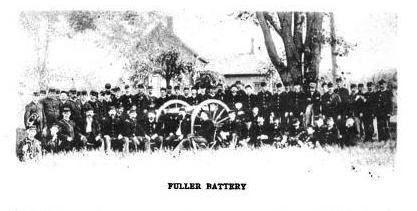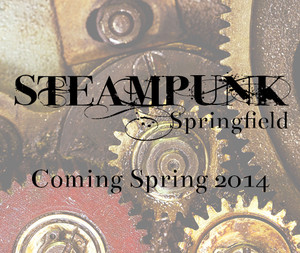
Raymond Loewy poses on the pilot cowling of his modified PRR K4s, shadowed by its true inner self on the track behind.
Disclaimer: we’re well aware this may appear to fall under the purview of Dieselpunk, rather than Steampunk, but underneath Raymond Loewy’s glorious steel shrouding ticked and hissed the polished pistons and connecting rods of a mighty steam-driven locomotive. Just sayin’.
History is one of those things that happens when you’re not looking. We often don’t have the perspective to understand what may be unfolding – right in front of one’s eyes – until afterward (sometimes significantly so), when a context and a critical mass has been established. A pundit or two takes analytical stab at it and names the events or trends or movements, and we can say “Ah, that was in the the golden era of the Steam Age” or “straight out of the Roaring Twenties” or “it was a remnant of the last days of Colonialism.” On top of that, there’s the axiomatic observation “History repeats itself:” perhaps a result of the former myopia or, more often, in spite of it. Add in the cyclic caprices of fashion and popular culture and you have a perfect retro-future generator. The Pennsylvania Railroad found a master practitioner in the person of legendary industrial designer Raymond Loewy: his 120th birthday (1893-1986) was yesterday, November 5th. Google featured this observation in their Doodle on the search engine’s start page.
Loewy was hired to help the Pennsylvania Railroad recast themselves as an appealingly modern, efficient, and superior mode of transportation (the rise of the private automobile was seriously affecting revenues) and, especially, a better choice over competitors such as the New York Central, which was waging its own image-remake battle. A designer, not an engineer, Raymond Loewy gave Pennsy’s motive power an eye-catching makeover. Eager to show the traveling public their embrace of the post-Depression, forward-looking Streamline Era, the first to get the “treatment” was the Pacific K4s class, the workhorse of the roundhouse stable and generally considered one of the greatest steam locomotives of all time. Number 3768 was the lucky duckling chosen for the swan costume: it was dubbed the “Torpedo” but underneath that sleek, swept steel jacket was the same old drive train, linkages, firebox, and boiler that powered these dependable and prolific beasts. Eventually, all of the streamlined units were stripped of their glamorous sheaths and they went back to service in work-clothes, and finally to the scrapheap. There are only two examples of the once plentiful K4 Class remaining: No. 3750 is on display at the Railroad Museum of Pennsylvania in Strasburg; No. 1361 was set to be restored to operation by the Railroaders Memorial Museum in Altoona through the restoration shop at Steamtown National Historic Site in Scranton, PA (and not too long ago in Bellows Falls, VT – just 25 miles up the track from Fuller Steam Division in Brattleboro, VT). The restoration has been stalled for now and the loco lies in pieces on the shop floor.
A heart of steam and a love for the beauty of the mechanical: one of the attributes of the Steampunk movement, of course. But to some minds, it runs a bit deeper than just shroudings upon the machine; not just an iconic industrial designer’s skin-deep take on a quotidian industrial application, not just a retro-future costume at a convention center near you. There’s something more about the attraction of this still-growing phenomenon that sparks an identification with an honesty of construction, an intrinsically explicit demonstration of purpose, and a realm of possibility, if not actuality. Steampunk has a bit of the neo-Luddite wrapped up in its DNA and this aspect would bear further scrutiny: others more qualified have done so already, and hopefully we’ll take a look at them in future views from the Observatory.













